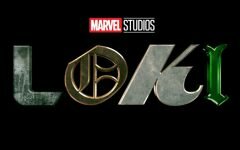Otto Binder deserves better than the craven “Rorschach”
I have read a lot of dumb comics. I’ve read a lot of cheap, gimmicky books with no substance. I have never read anything quite like “Rorschach.”
“Rorschach” #1 hit the shelves on Oct. 13, the latest in a long line of sequels to “Watchmen,” an intellectual property stolen from creators Alan Moore and Dave Gibbons decades ago. This is the first new “Watchmen” comic after the Emmy-winning hit that was the HBO series of the same title, so between the landmark original comic and the acclaimed television series, the bar was set high for “Rorschach” writer Tom King (“Batman”, “Mister Miracle”), and it’s a bar he utterly failed to clear.

“Rorschach” follows the investigation into the attempted assassination of a presidential candidate, and suspect number one is a fictional comic artist named Will Myerson, a beloved creator and notorious recluse clearly modeled after the late Steve Ditko (“The Amazing Spider-Man,” “Blue Beetle”).
Making Ditko into the villain of a comic based on a book stolen from its creators, which itself was based loosely on characters created by none other than Ditko himself is shameful, and unfortunately not the worst offense. The home of the ersatz Ditko is bugged by the FBI, and he’s being visited by real comic creator Otto Binder (“Action Comics,” “Superboy”).
Binder is the co-creator of countless DC Comics characters and concepts, including Supergirl, the Legion of Super-Heroes, Brainiac, and Black Adam. His family was torn apart by tragedy when his daughter died in a car accident in 1967. He is depicted here as visiting the Ditko stand-in and attempting a ritual in which he can communicate with his daughter’s spirit.
It is an absolutely craven piece of writing which exists solely to be an easter egg for comics history buffs. The personal tragedy of a beloved creator has been made into a commodity to be exchanged between nerds, it’s a reference to inside baseball that only exists for its own sake. Between that and unresearched references to the works of Hannah Arendt, it is hard to believe this script made it past the editors.

If there is any merit to this book, it is from artist Jorge Fornés (“Batman,” “Daredevil”) and colorist Dave Stewart (“Hellboy,” “The Umbrella Academy”). Fornés’ clean, effective lines, deceptively simple compositions, and skillful use of space and shadow are bathed in Stewart’s rich palette to evoke the somber, suspenseful drama of the films of Alan J. Pakula shot by Gordon Willis such as “All The President’s Men” and “The Parallax View.”
Letters in this book were done by Clayton Cowles, a veritable workhorse of lettering who does some interesting things in Fornés’ layouts, particularly on the first page. I just wish this work was in any other book, as the effort here is wasted on a story written in such an insulting manner that these creative high points are cheapened also.
Time spent reading “Rorschach” would be better spent reading other books by Fornés, Stewart, or Cowles, the original “Watchmen,” or perhaps more aptly, anything written by Otto Binder.
Blanton Matthews is a Junior at Henderson State,...












Jasper Ballew — Apr 21, 2021 at 4:53 pm
Disappointed to see that Matthews is still repeating the lies that the Watchmen properties were “stolen” from Moore and Gibbons. Moore was on a work for hire contract, and the characters were token standins for the Charlton Comics characters that DC had just acquired.
Warren THOMAS Newsom — Oct 30, 2020 at 5:05 pm
Fantastic review! I find Tom King to be highly over-rated.